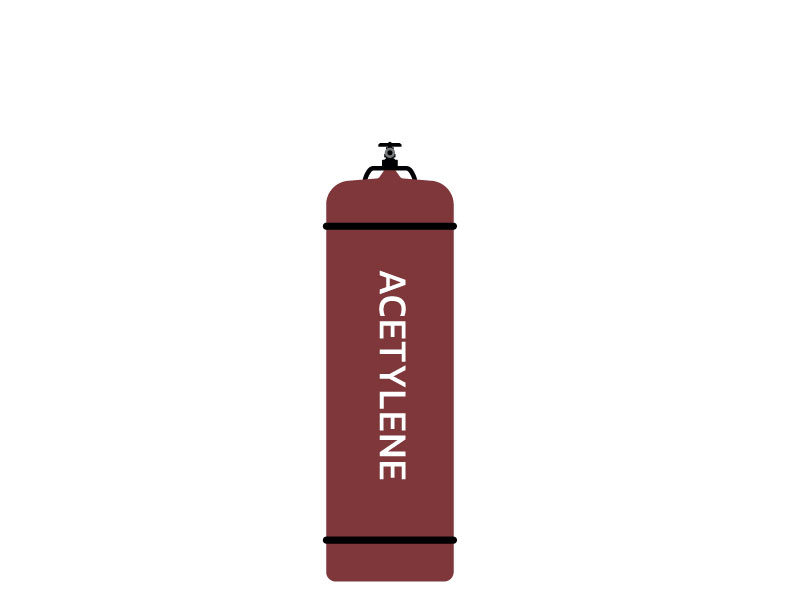Acetylene
In 1836, Edmund Dowy identified Acetylene gas as a new carbon-containing compound from hydrogen. Acetylene gas was rediscovered in 1860 by the French chemist Marceline Bertolt, who named it acetylene. Bertolt produced this gas by passing vapors of organic compounds through a hot, molten tube and collecting the output.
safety information
Acetylene is a very flammable gas . Acetone or DMF is commonly used as a solvent in acetylene cylinders. Acetylene gas can create an explosive mixture with air. Acetylene gas can react strongly in the presence of oxidizers. Avoid the presence of acetylene gas in high temperature conditions, high pressure and contact with flames, sparks and hot surfaces. Acetylene gas can react in combination with air in the presence of oxidizers and halogens and halogenated compounds. Do not discharge cylinders containing acetylene gas, at P≥1bar pressure. Also,in order to prevent contamination of the process path with solvent, do not use the gas, if the cylinder pressure is less than 5.4 bar. It is recommended to use Flash back to prevent the flow from returning to the cylinder.
Compatibility
At pressures above 1 bar, it decomposes spontaneously and rapidly. In the presence of copper, silver and mercury, explosive compounds are formed. Avoid the presence of acetylene against alloys with more than 65% copper. Do not use alloys containing more than 45% silver in the presence of acetylene. Avoid contact with oxidizers and oxygen. The acetone in the acetylene cylinder is incompatible with elastomers.
Sources
Acetylene is manufactured commercially by reaction between calcium carbide and water, and as a by-product of ethylene production.
Applications
Acetylene is used as a raw material for the production of electrically conducting plastics, such as polyacetylene.
Acetylene is used with high purity synthetic air or nitrous oxide as a fuel for the flame in atomic absorption flame .
Acetylene is one of the components of lung testing gases.
Acetylene is most commonly used in combination with oxygen for cutting or welding materials such as mild steel.
Acetylene is used in the cultivation of plants; it improves the formation of new flowers.
This unsaturated hydrocarbon exhibits high chemical reactivity, and is an important intermediate in the chemical industry. It is employed for the production of:
→ acetaldehyde
→ acrylic acids
→ acrylic ethers
→ acrylonitride
→ carbazole
→ butenyne (vinyl acetylene)
→ chloroethene (vinyl chloride)
→ diols
→ ethene
→ ethenoxyethenes (vinyl ethers)
→ ethenyl acetate (vinyl acetate)
→ ethenyl amides (vinyl amides)
→ ethenyl sulfides (vinyl sulfides)
→ neoprene
→ phenylethene (styrene)
→ polyoxymethylene
→ pyrrolidine
Acetylene is used as a component in calibration gases for the gas, oil and chemical industries.
Tehran Farafan Gas supplies acetylene gas with a purity of 99.6 in welded carbon steel cylinders.

